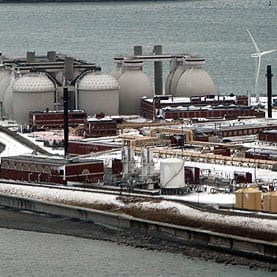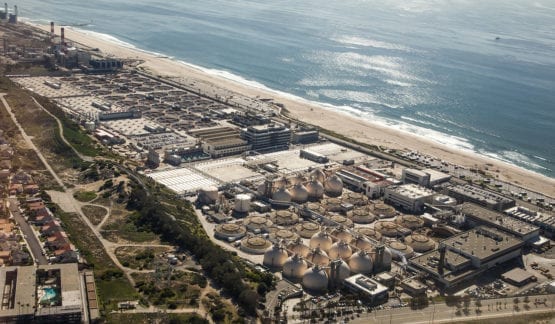
Only about half of the prescription drugs and other newly emerging contaminants in sewage are removed by treatment plants says a new report
Only about half of the prescription drugs and other newly emerging contaminants in sewage are removed by treatment plants.
That’s the finding of a new report by the International Joint Commission, a consortium of officials from the United States and Canada who study the Great Lakes.
The impact of most of these “chemicals of emerging concern” on the health of people and aquatic life remains unclear. Nevertheless, the commission report concludes that better water treatment is needed.
“The compounds show up in low levels – parts per billion or parts per trillion – but aquatic life and humans aren’t exposed to just one at a time, but a whole mix,” said Antonette Arvai, physical scientist at the International Joint Commission and the lead author of the study. “We need to find which of these chemicals might hurt us.”
More than 1,400 wastewater treatment plants in the United States and Canada discharge 4.8 billion gallons of treated effluent into the Great Lakes basin every day, according to the study.
The scientists reviewed 10 years of data from wastewater treatment plants worldwide to see how well they removed 42 compounds that are increasingly showing up in the Great Lakes.
Six chemicals were detected frequently and had a low rate of removal in treated effluent: an herbicide, an anti-seizure drug, two antibiotic drugs, an antibacterial drug and an anti-inflammatory drug.
Caffeine, acetaminophen and estriol (a natural estrogen) also were frequently detected in sewage but had high removal rates.
The wastewater plants had a low removal rate (less than 25 percent chance of removing 75 percent or more) for 11 of the 42 chemicals.
“The weight of evidence suggests that at least half of the 42 substances examined in the present study are likely to be removed in municipal wastewater treatment plants,” the authors wrote.
Previous research has linked other drugs in fish to slower reaction times to predators, altered eating habits and anxiety.
The Latest Google Headlines on:
Wastewater treatment
[google_news title=”” keyword=”wastewater treatment” num_posts=”10″ blurb_length=”0″ show_thumb=”left”]
The Latest Bing News on:
Wastewater treatment
- Director of Michigan Department of Environment, Great Lakes and Energy tours Marquette’s wastewater treatment planton May 1, 2024 at 6:07 pm
Marquette officials played host to Michigan’s environmental watchdogs on Wednesday. Phil Roos, Director of Michigan’s Department of Environment, Great Lakes and Energy (EGLE), was in Marquette to tour ...
- Marquette wastewater treatment facility upgrades continueon May 1, 2024 at 4:33 pm
Wednesday morning, local leaders toured the Marquette Area Wastewater Treatment facility and celebrated the work of new projects to protect the vital resource.
- Studies assess feasibility of aquaculture wastewater treatment methodson May 1, 2024 at 2:16 pm
In the 2023 study, Simsek and his co-authors evaluated electrocoagulation (EC) and electrooxidation (EO) treatments of shrimp wastewater, both separately and together. EC and EO, widely used methods ...
- Hinesburg moving forward with wastewater plant constructionon May 1, 2024 at 12:59 pm
Plans are moving forward in Hinesburg to replace its wastewater treatment facility. The town’s current wastewater discharge doesn’t meet state standards. They’ve been trying to bring their facility up ...
- Veolia and Milwaukee recognize wastewater infrastructure as an “Ecofactory”on May 1, 2024 at 5:17 am
Veolia and the state of Milwaukee recognize Milwaukee’s wastewater treatment infrastructure as an “Ecofactory.” ...
- Sheep control plant and weed growth at Merced wastewater treatment plant. Why it’s importanton April 30, 2024 at 1:57 pm
More than 900 sheep are being used to graze on the land and control plant and weed growth over about 80 acres in Merced.
- West Point Treatment Plant water quality permit now issuedon April 29, 2024 at 3:46 pm
We've now issued the final permit for the West Point wastewater treatment plant in Seattle. It strengthens protective measures for Puget Sound with updates that match current water quality rules.
- Further study ordered on wastewater treatment plant proposed near Pinnacle Mountain, public wellon April 26, 2024 at 7:33 pm
A state commission on Friday remanded a permit that had been issued for a wastewater treatment plant at a proposed 76-home subdivision near Pinnacle Mountain, agreeing with an administrative law judge ...
- Magazine features Albert Lea wastewater treatment planton April 26, 2024 at 8:49 am
ALBERT LEA, Minn. - The Albert Lea wastewater treatment plant was recently featured in a national magazine for its work to protect the environment. The magazine, called Treatment Plant Operator, ...
- Wastewater treatment plant construction expected to start in Juneon April 24, 2024 at 7:06 pm
The City of Sterling is set to move forward on the final phase of its wastewater system improvements project in June, according to John Scheri, of Mott-MacDonald, the engineering firm leading the ...
The Latest Google Headlines on:
Chemicals of emerging concern
[google_news title=”” keyword=”Chemicals of emerging concern” num_posts=”10″ blurb_length=”0″ show_thumb=”left”]
The Latest Bing News on:
Chemicals of emerging concern
- Are there 'forever chemicals' in your well water? DHEC accepting requests for PFAS testingon May 1, 2024 at 8:26 am
After recent announcements from state and federal officials regarding so called 'forever chemicals," how do private well owners in South Carolina go about testing for PFAS compounds?
- North American Chemical Firms Update IT for Age of Changeon May 1, 2024 at 2:29 am
Meeting new standards for decarbonization and environmental, social and governance (ESG) reporting are also rising concerns ... to meet emerging regulations." The report also explores other technology ...
- Study links endocrine-disrupting chemical exposure to poorer sleep and vitamin D deficiencyon April 30, 2024 at 7:08 pm
Study in the journal Nutrients links exposure to endocrine-disrupting chemicals with vitamin D deficiency and reduced sleep duration, suggesting a compounded negative impact on health.
- 6 toxic chemicals we’re exposed to daily and how to avoid themon April 30, 2024 at 11:16 am
Everyday products containing hazardous chemicals could jeopardize our health. Here are six examples and strategies to reduce exposure to them.
- Emerging AI technologies make it easier for bad actors to 'conceptualize and conduct' chemical, biological, radiological or nuclear attacks: DHSon April 30, 2024 at 3:45 am
Emerging technologies in artificial intelligence will make it easier for bad actors to "conceptualize and conduct" chemical, biological, radiological or nuc ...
- Concern over ‘quats’ in strong cleaning products – what you should knowon April 29, 2024 at 6:09 am
A professor of medicinal chemistry at the University of Washington says exposure to quats is “ubiquitous.” They’ve been detected in human breast milk and in the feces of dogs living in shelter cages ...
- Zombie-like fungus could turn cicadas into ‘saltshakers of death’ this summer: expertson April 28, 2024 at 8:09 am
An epic amount of cicadas are expected to infiltrate the U.S. soon, with multiple broods emerging from their current earthen homes to fill the air with their song — and fungus spores.
- Cocaine is an emerging contaminant of concern in the Bay of Santos (Brazil), says researcheron April 25, 2024 at 9:15 am
In addition to already known pollutants, the Bay of Santos—a city in the state of São Paulo (Brazil) that is home to the largest seaport in Latin America—has been affected by an emerging contaminant ...
- How cleaning product chemicals called ‘quats’ may affect the brainon April 25, 2024 at 4:05 am
A common ingredient in household disinfectants called ‘quats’ may kill some brain cells, according to new research.
- Treating Tampa Bay’s “Forever Chemicals” in Our Drinking Wateron April 24, 2024 at 12:27 pm
The EPA has recently set limits on PFAS hazardous "forever chemicals" in our drinking water supply. Find out from our local water quality experts how our water utilities plan to remove PFAS from our ...










